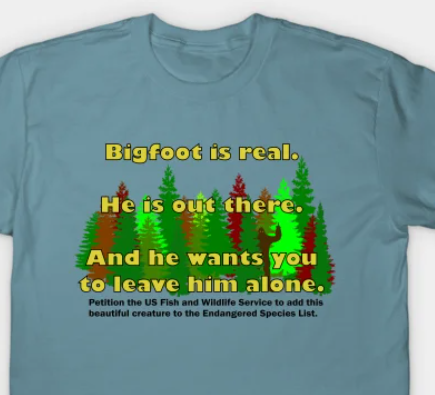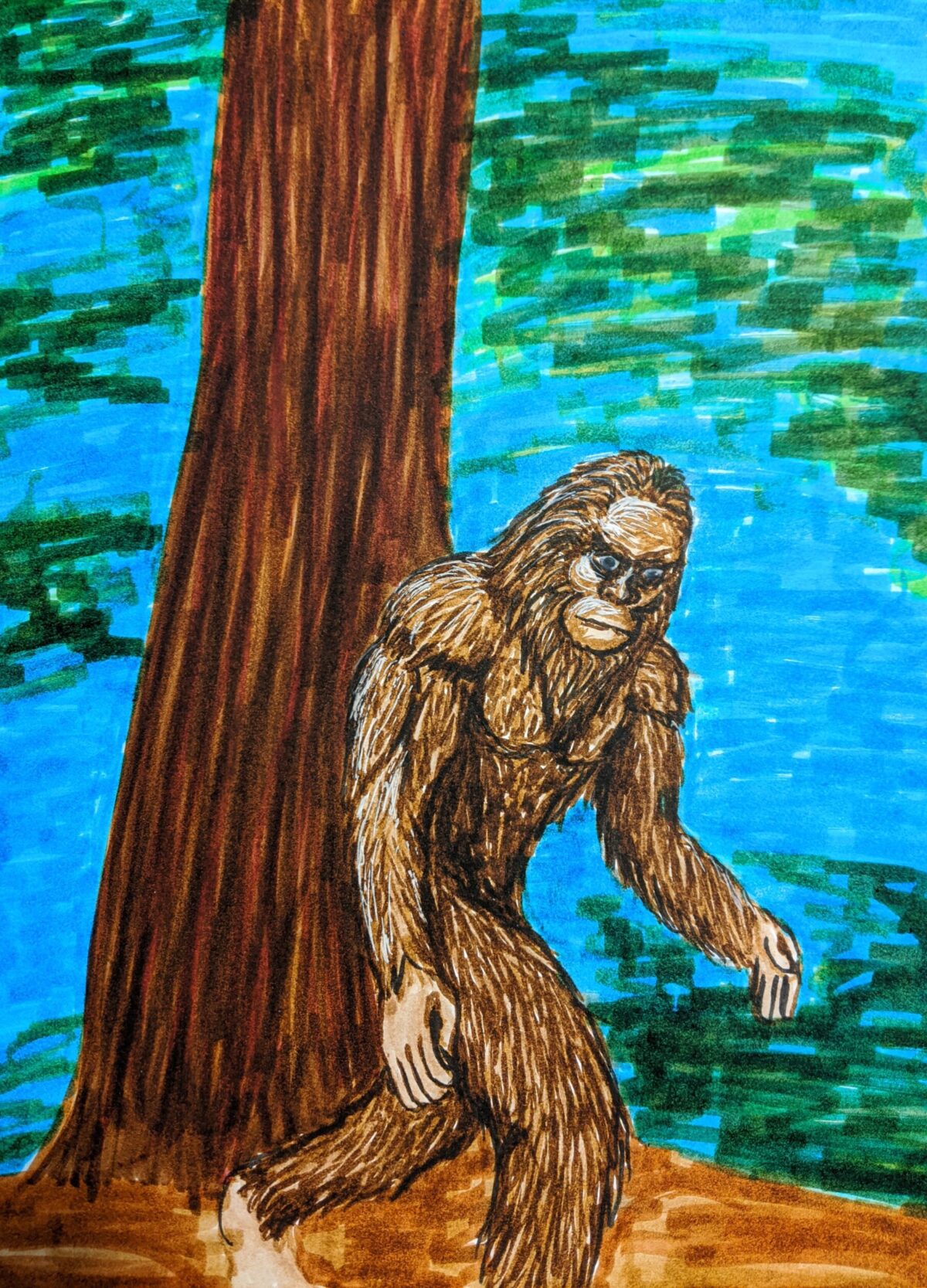I haven’t done a lot of gathering for this page yet, but I wanted to get things rolling with what is easily my favorite cryptid.
You may know him as Sasquatch, Yeti, Yowie, the Skunk Ape, Grassman, Almas, the Wildman, the Woodman, Swamp Ape, Orang Pendek (or Dalam), or even Mande Barung… but it will always be Bigfoot to me.
Primitive peoples throughout the world almost all have a legend that match the Native Americans traditional tales of a giant hairy man that prowls the woods, and even science offers fossilized remains of of the Orangutan ancestor known as Gigantopithecus.
Over the years there have been more alleged sightings than pretty much any other cryptid with the most famous evidences being:
- Patterson-Gimlin film (1967) – Bluff Creek, California: Controversial footage showing a purported Bigfoot walking.
- Albert Ostman (1924) – Toba Inlet, British Columbia: Claimed to be kidnapped by a Bigfoot family.
- Skookum Cast (2000) – Washington State: An impression found resembling a Bigfoot body print.
- Freeman Footage (1994) – Washington State: Video showing a purported Bigfoot.

Get your own Bigfoot tee at the madman designs Tee Store.
Also available in other styles and colors.
If you decide to go on the hunt, the important information you will need is as follows:
Physical Description
- Height: Reported to be between 6 to 10 feet tall.
- Weight: Estimates range from 400 to 1000 pounds.
- Covered in hair, often described as dark brown or black.
- Human-like facial features with a pronounced brow ridge.
- Large, elongated footprints, often measuring 16 to 24 inches in length.
Behaviors
- Typically described as shy and elusive.
- Often reported to emit high-pitched vocalizations or howls.
- Accounts suggest a nocturnal or crepuscular lifestyle.
- Some reports indicate a tendency to throw rocks or branches as a form of intimidation.
Abilities
- Believed to possess enhanced strength and agility.
- Accounts sometimes suggest a strong, unpleasant odor associated with sightings.
- Some reports describe a purported ability to elude detection by humans and evade capture.
Preferred Habitat
- Dense forests, particularly in remote or mountainous regions.
- Often associated with areas abundant in wildlife, such as deer and salmon.
- Reported sightings in both temperate and cold climates, suggesting adaptability to various environments.
Range of Sightings
- Primarily reported in North America, especially in the Pacific Northwest, but sightings have been claimed worldwide.
- Sightings have been reported in forests across the United States, Canada, and parts of Asia and Australia.
Happy hunting!


